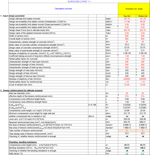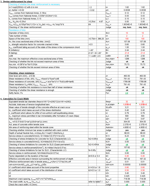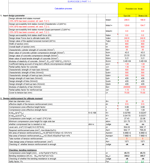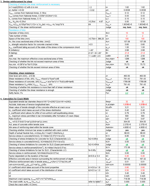Reinforced concrete design EC2
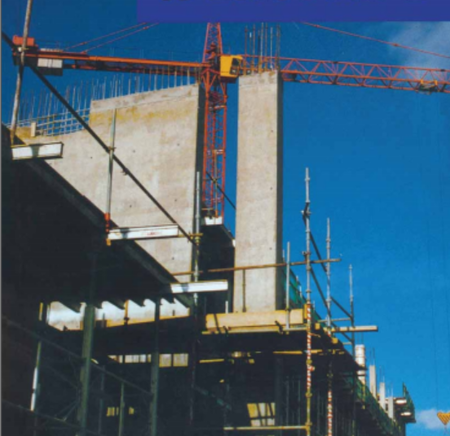
Description
RC design based on EN 1992
<p>Eurocode 2 (EN 1992) provides guidelines for the design of reinforced concrete structures, covering various aspects such as materials, durability, structural analysis, and detailing. Here's a summary of key calculations involved in the design of reinforced concrete structures according to Eurocode 2:</p>
<ol>
<li>
<p>Material properties: Determine the characteristic compressive strength (f_ck) and tensile strength (f_ctk) of the concrete, as well as the yield strength (f_yk) of the reinforcing steel bars.</p>
</li>
<li>
<p>Load determination: Calculate the actions (loads) acting on the structure, including dead loads, live loads, and environmental loads, such as wind, snow, and seismic forces. Use Eurocode 1 (EN 1991) for guidance on loads.</p>
</li>
<li>
<p>Load combinations: Apply appropriate load factors to the characteristic loads and combine them using the specified partial safety factors and combination factors from Eurocode 2.</p>
</li>
<li>
<p>Structural analysis: Perform structural analysis to obtain internal forces (bending moments, shear forces, axial forces) and deformations in the structural elements.</p>
</li>
<li>
<p>Ultimate limit state (ULS) design: Verify the structural capacity of the elements to resist the applied loads without failure or excessive deformation. This involves checking the bending, shear, and axial capacity of the elements, as well as detailing the required reinforcement.</p>
<p>a. Bending: Calculate the required area of reinforcement (A_s) for flexure using the design moment and the design strength of the materials.</p>
<p>b. Shear: Verify the shear capacity of the element, considering the contribution of the concrete and the shear reinforcement, if required.</p>
<p>c. Axial: Check the axial capacity of the elements under compressive or tensile forces, considering the interaction between axial and bending forces, if applicable.</p>
</li>
<li>
<p>Serviceability limit state (SLS) design: Ensure that the structure remains functional and comfortable for its intended use by checking deflections, crack control, and vibrations.</p>
<p>a. Deflections: Calculate the deflections of the structural elements and compare them with allowable limits specified in Eurocode 2.</p>
<p>b. Crack control: Verify that the crack width in the reinforced concrete elements is within the acceptable limits by providing adequate reinforcement and detailing.</p>
</li>
<li>
<p>Durability and detailing: Design the concrete cover, reinforcement spacing, and anchorage lengths to ensure the structure's durability and proper load transfer.</p>
</li>
<li>
<p>Fire resistance: Check the fire resistance of the structural elements, considering the required fire rating and the protection provided by the concrete cover and reinforcement.</p>
</li>
</ol>
<p>Once the design is complete, document the calculations, reinforcement details, and construction specifications in drawings and reports, which serve as a guide for the construction team and for obtaining necessary permits and approvals. Always consult the Eurocode 2 guidelines and any relevant national annexes for specific requirements and procedures.</p>Calculation Preview
Full download access to any calculation is available to users with a paid or awarded subscription (XLC Pro).
Subscriptions are free to contributors to the site, alternatively they can be purchased.
Click here for information on subscriptions.
Comments: 1
×
johndoyle-admin
2 years ago
A nice debut calculation! I have awarded a three month XLC Pro subscription by way of thanks.


